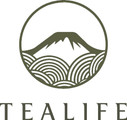The Origin of the ”Hachijyu-Hachiya” Tea
This seemingly common name for a high-grade Sencha has a little more to its story than you might think.

November 23rd, 2021

What is a Hachijyu-Hachiya Tea?
The reason you ended up on this page, I'm assuming, is that you've stumbled upon a Japanese Tea that was named "Hachijyu-Hachiya", and were wondering if it was just a weird name for a tea, or an unfamiliar category of Japanese tea.
In fact, you'll see the name "Hachijyu-Hachiya" for a Sencha quite often. It's usually used as a popular name for a high-quality Sencha tea.
We ourselves carry a Hachijyu-Hachiya tea in our online shop as well! (It's actually one of our recommended products!)
It may be easier for those of you who can decode Chinese characters to guess the meaning, but the name "Hachijyu-Hachiya" means "Eighty-Eighth Night Tea". It's written as below:

So what is the meaning of this Eighty-Eighth night?
The Significance of the Eighty-Eighth Night
The name Hachijyu-Hachiya resembles the Eighty-eighth night counting from the first day of Spring in the Japanese calendar – which usually falls on the 2nd of May of a normal year, and the 1st of May of a leap year.
It is said that this is the best time to harvest tea leaves. It also has an auspicious meaning, and many Japanese people will drink tea picked on this day for longevity. The tea leaves taken at this time will be called the Hachijyu-Hachiya tea, and is usually considered a high-grade tea. It is most commonly produced as a form of Sencha.
This myth about the Hachijyu-Hachiya contributing to a long life, it can be argued that, is actually not too mistaken. Since this will also be the first harvesting session of the year, Hachijyu-Hachiya tea is categorized as a Shincha or Ichibancha.
These tea leaves that come from the first harvesting session are loaded with nutrients such as Catechin and Theanine, and can be considered the tea with the highest health benefits. It is an extremely enjoyable tea characterized by a rich taste with strong Umami.
Tea leaves coming from the subsequent harvesting sessions, called Nibancha and Sanbancha, will be significantly lower in nutrients. Perhaps the ancient Japanese people understood this and started to drink this as a healthy habit.

Are all Eighty-Eighth Night Teas Harvested Exactly on the Eighty-Eighth Night from the First Day of Spring?
The short answer is no.
For the tea farm, the timing of the harvesting really depends on the climate and the weather in that area.
Naturally, the timing of harvesting will also differ depending on the latitude of the farm. Tea farms in the south will have an earlier harvesting timing as compared to the northern tea farms, as the climate warms earlier.
So the best timing really differs depending on the farm, and it may or may not happen to fall on the Eighth-Eighth night of Spring.
However, I was asking Taniguchi-san of Taniguchien Seichaba about when they harvested their Eighty-Eighth Night tea. His answer was that it was indeed very close to the actual Eighty-Eighth Night of Spring.
Perhaps the tea farms of Kyoto, or the Ujicha farms, tend to harvest their first flush leaves very close to that timing.

Preparing Hachijyu-Hachiya tea
Since Hachijyu-Hachiya tea is a high-grade Sencha, it should be prepared in the same way a high-grade Sencha is prepared. Refer to the chart below.
Normal-Grade Sencha | High-Grade Sencha |
Servings | 2 servings | 2 servings |
Water (mL) | 200 ml | 200 ml |
Leaves (g) | 4g | 4g |
Leaves (roughly in teaspoons) | 2 tsp | 2 tsp |
Temperature (Celsius) | 90° | 70° |
Brewing time (Seconds) | 90 seconds | 90 seconds |
The key is the water temperature - make sure the hot water's temperature is reduced to around 70 degrees Celsius before the infusion. This will allow to maximize the Umami of the tea while containing the astringency. You can read the step-by-step instructions on how to brew High-grade Sencha here.

